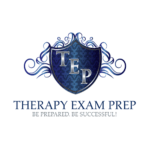
Recently The Federation of State Boards of Physical Therapy (FSBPT) provided an update about the expectations for entry-level PT and PTA candidates. The FSBPT makes changes throughout the year in order to keep up-to-date as well as make adaptations as the professional field changes. I’ll discuss what they mentioned for later in 2020 and how it affects your preparation for the upcoming National Physical Therapy Exam (NPTE).
Integrate Several Pieces of Information for the NPTE
It would be great if patients come to us with a manual on how to treat them and get them better; unfortunately, they don’t. What we end up getting are several pieces of information from medical charts, intake forms, prescription and, of course, the physical therapy evaluation performed. This can make you feel overwhelmed with information overload while trying to process what is given to us. Somehow, we are supposed to put all these separate pieces together like a puzzle in order to answer the question.
If you just take one piece of the puzzle, it wouldn’t make the complete picture, by throwing out the other pieces of information. Each piece of information gathered plays a role and should be considered at face value without making assumptions or adding things to them. Sometimes you have to determine the relevance (which way to place the piece) in order to make the best decision for this situation. The challenge is putting all these pieces of scattered information together in a more cohesive way (fit the pieces together) so that picking an answer is systematic rather than random or just guessing.
Right now, the current anatomy of the NPTE question is written to focus mainly on one particular system, condition or piece of information (think of a small puzzle with big pieces). What you can expect in the future for the exam questions would be the focus on multiple systems, conditions and various pieces of information to show a bigger picture (a larger puzzle with smaller pieces). The goal is that you are able to pick out a few pieces of the puzzle from the information given, to help answer the question correctly.
So, what you are being tested on is how well you can find and put together what seems like unrelated pieces. The focus is shifting from being narrow with just one aspect to a wider view to recognize how the different pieces are integrated to give a more complete bigger picture. This also continues to shift the academic mindset to avoid thinking the NPTE is hard!
Leverage Clinical Reasoning
The upcoming changes to the NPTE questions will push you to think more like a practicing clinician rather than an academic student. This challenge is to shift you from relying on prior academic studying habits that don’t necessarily help you on this exam when applying the knowledge to focusing on clinical scenarios. Choosing the best answer for the patient questions requires not just the understanding of the content material that can be regurgitated, but the key is being able to process and utilize clinical judgment.
This exam will continue to challenge you to think at a higher level in order to bridge that gap from academic to clinical. Instead of just reading and memorizing the content for the NPTE, you are expected to be able to interpret and analyze with good decision-making skills. You are encouraged to take the gathered information and use your clinical reasoning skills to make connections and correlations to help you to arrive at the best decision logically.
Going beyond the student mentality is the key to applying the information to the current patient situation. It’s recognizing what information is important and what is not necessary to answer the question. It’s about understanding when to apply your academic knowledge generally or specifically to the given situation. It’s being able to prioritize what is in front of you rather than using only what the textbooks and study guides provide.
One of the keys to thinking more clinically is being able to interpret without overanalyzing the information. The exam will test how well you can take the subjective, past medical history and other information at face value to gain an understanding of the patient’s clinical presentation. Another aspect of the exam is being able to interpret and analyze the objective findings in order to make connections and be able to make a decision based on what’s there. You’ll be expected to correlate information in order to apply clinically in general or with specifics. When it comes to choosing an answer, you’ll be tested on how well you can prioritize them and eliminate irrelevant information.
Incorporate Extended Clinical Scenarios
Instead of the current NPTE exam questions that range from one to several sentences, the FSBPT wants to focus now on presenting “medically complex cases” in a more extended way. So, instead of a quick snapshot of a patient (close up picture), they want to provide you with a more comprehensive snapshot (more like a panorama). This represents a more realistic type of patient that can be complex rather than the current exam of focusing on one aspect only.
You’ll want to think of extended clinical scenarios similar to what you would expect from a full physical therapy evaluation. This would incorporate different aspects mentioned about the patient you are seeing with history, examination, and other important areas. Remember, all systems need to be taken into account (everyone has lungs, heart, skin, etc) when treating this patient as a whole. As treating clinicians, sometimes we are the first healthcare person that the patient sees and we want to be sure to pick up on other clues that may require additional attention.
Rather than answering a single question and moving on, you’ll be now answering a set of questions, that refers to the case scenario provided. You don’t have to worry whether the questions are related as each question will be independent. That means prior questions won’t hurt or help you to answer the next question that is presented to you.
How This Changes Your NPTE Studying
Preparing for the NPTE in general, the focus should be on learning how things are connected in order to retain the information better. Realize that patients are not textbooks or study guides, they are complex and we want to show them we know more than what Google Search, WebMD (insert any other medical site) or YouTube can provide. Studying for the NPTE should not be a one and done (or cram and dump) since the information you are learning will help you be able to treat patients holistically better.
Overall, strive to go beyond the continuation of the academic PT program and think more like a practicing clinician. Patients don’t always present nicely as charts, figures or what is considered “textbook” cases. Being able to recognize and apply general concepts to specific patients and vice versa will help you gain points on the exam. Take the time to go beyond the basics as well as to see how to combine different aspects and to correlate with examples to better prepare you to answer questions. Being able to think clinically is going to be key to your future in this profession.
